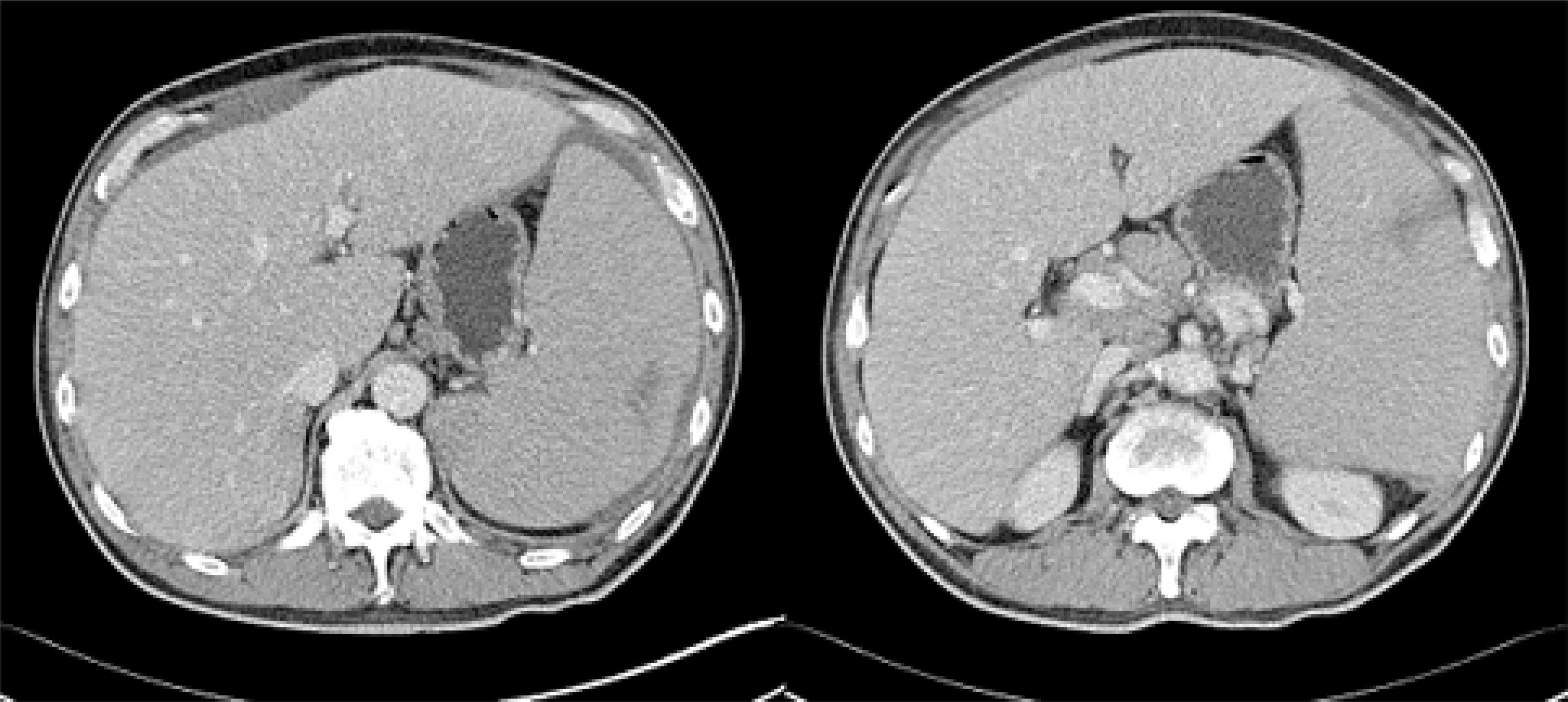Abstract
Thalidomide is an anti-angiogenic agent widely used in patients with multiple myeloma. The response to therapy is commonly monitored using serum and/or urine M protein, as these are known to reflect the tumor burden. Although extramedullary plasmacytomas are tissues with high neovascularization, it has been suggested in some reports that the response to thalidomide in these patients may be inferior, despite changes in the serum M protein level. Herein, we report the case of a patient who newly developed hepatosplenic extramedullary plasmacytoma, despite reduction in the serum M protein level following thalidomide treatment.
REFERENCES
1). Song YW, Ryoo BY, Kim BS, et al. Retrospective Analysis of treatment outcome and prognostic factors in multiple myeloma. Korean J Hematol. 2001; 36:9–17.
2). Singhal S, Mehta J, Desikan R, et al. Antitumor activity of thalidomide in refractory multiple myeloma. N Engl J Med. 1999; 341:1565–71.

4). Richardson P, Hideshima T, Anderson K. Thalidomide: emerging role in cancer medicine. Annu Rev Med. 2002; 53:629–57.

5). Rosinol L, Cibeira MT, Blade J, et al. Extramedullary multiple myeloma escape the effect of thalidomide. Hematologica. 2004; 89:832–6.
6). Blade J, Perales M, Rosinol L, et al. Thalidomide in multiple myeloma: lack of response of soft-tissue plasmacytomas. Br J Haematol. 2001; 113:422–4.
7). Damaj G, Mohty M, Vey N, et al. Feature of extramedullary and extraosseous multiple myeloma: a report of 19 patients from a single center. Eur J Haematol. 2004; 73:402–6.
8). Dimopoulos MA, Zervas K, Kouvatseas G, et al. Thalidomide and dexamethasone combination for refractory multiple myeloma. Ann Oncol. 2001; 2:991–5.

9). Cavo M, Zamagni E, Tosi P, et al. Superiority of thalidomide and dexamethasone over vincristine-doxorubicin dexamethasone (VAD) as primary therapy in preparation for autologous transplantation for multiple myeloma. Blood. 2005; 106:35–9.




 PDF
PDF ePub
ePub Citation
Citation Print
Print




 XML Download
XML Download